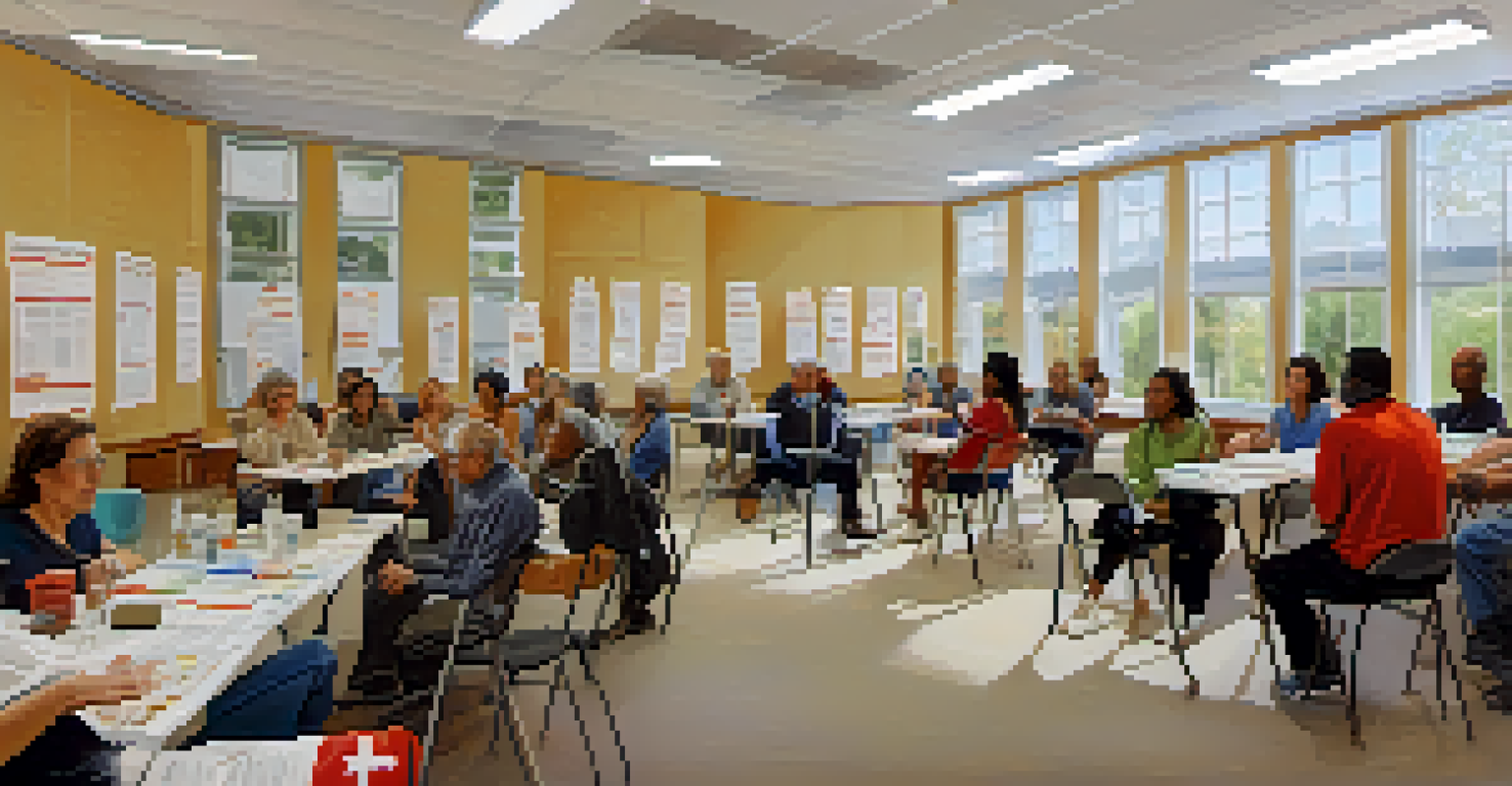Impact of Climate Change on NYC's Disaster Preparedness Plans

Understanding Climate Change and Its Effects on NYC
Climate change refers to long-term shifts in temperatures and weather patterns, primarily driven by human activities. In New York City, this manifests as rising sea levels, increased rainfall, and more frequent heatwaves. These changes not only affect daily life but also strain the city's infrastructure and resources, making disaster preparedness crucial.
The greatest threat to our planet is the belief that someone else will save it.
As NYC faces a combination of natural disasters—ranging from hurricanes to flooding—the urgency for robust preparedness plans has never been more apparent. For instance, Hurricane Sandy in 2012 highlighted vulnerabilities, prompting officials to rethink how the city responds to such threats. Understanding these climate impacts helps in tailoring effective emergency management strategies.
Moreover, the population density and urban landscape of NYC create unique challenges. With millions of residents living in close quarters, a single disaster can lead to widespread chaos. Thus, recognizing the implications of climate change is essential for developing comprehensive disaster response plans.
Current Disaster Preparedness Plans in NYC
New York City has established various disaster preparedness plans that aim to protect its residents during emergencies. These plans include evacuation routes, emergency shelters, and communication strategies to keep the public informed. However, as climate change intensifies, these existing frameworks require updates to address new challenges effectively.

For instance, the city's 'Get Prepared' campaign educates residents on emergency kits and response procedures. Yet, with rising sea levels, many traditional evacuation routes may become compromised during significant storms. This reality necessitates a reassessment of logistics and accessibility in disaster scenarios.
Climate Change Challenges NYC's Safety
Rising sea levels and extreme weather events necessitate robust disaster preparedness plans for New York City.
Furthermore, the integration of technology in these plans is crucial. NYC is leveraging data analytics to predict potential disaster impacts better. By utilizing this information, the city can create more resilient systems that adapt to evolving climate challenges.
The Role of Community Engagement in Preparedness Plans
Community engagement plays a vital role in enhancing NYC's disaster preparedness. Involving locals in planning and training initiatives helps to build a culture of readiness. For example, neighborhood-based organizations often lead workshops to educate residents on emergency protocols and resources.
Adaptation is not a passive response to climate change; it is a proactive approach to ensure resilience and sustainability.
Moreover, community feedback can provide invaluable insights into the unique needs and vulnerabilities of different areas. Engaging with diverse populations ensures that preparedness plans are inclusive and effective, catering to all demographics. This grassroots approach empowers residents to take proactive steps in safeguarding themselves and their families.
Additionally, fostering relationships between city officials and community members can improve trust and cooperation during emergencies. When residents feel invested in their safety, they are more likely to respond positively to evacuation orders or emergency alerts.
Innovative Solutions for Climate Adaptation in NYC
As climate change continues to pose threats, innovative solutions are emerging to help NYC adapt. One notable example is the construction of resilient infrastructure, such as seawalls and green roofs, designed to absorb excess rainfall and mitigate flooding. These projects not only protect the city but also enhance its aesthetic appeal and promote biodiversity.
Another approach involves the use of technology in disaster preparedness. For instance, NYC has introduced smart sensors to monitor water levels in real-time, allowing for quicker response actions during potential flooding. This integration of tech is pivotal in creating a more responsive and aware city.
Community Engagement Enhances Preparedness
Involving local residents in disaster planning fosters a culture of readiness and ensures plans address diverse needs.
Furthermore, the city is investing in community green spaces that can serve as temporary flood barriers. By transforming vacant lots into parks, NYC is not only beautifying neighborhoods but also creating natural solutions to combat climate change impacts.
Challenges in Implementing Disaster Preparedness Plans
Despite the efforts to enhance disaster preparedness, several challenges persist in NYC. Funding limitations often hinder the implementation of necessary upgrades to infrastructure. As climate change demands more resources, the city must prioritize investments strategically to ensure safety without overextending its budget.
Additionally, public awareness remains a significant barrier. While many residents may recognize the importance of disaster preparedness, they may not take the necessary actions to prepare themselves. This gap highlights the need for ongoing education and outreach initiatives to engage the community effectively.
Moreover, the unpredictability of climate change adds another layer of complexity. With extreme weather events becoming more frequent and severe, preparing for the unknown can prove daunting. NYC's disaster plans must remain flexible and adaptable to account for the changing nature of climate risks.
Collaborative Efforts between Local and Federal Agencies
Collaboration between local and federal agencies is essential for effective disaster preparedness in NYC. The city works closely with agencies such as FEMA (Federal Emergency Management Agency) to align strategies and resources. This partnership enhances the capacity to respond to emergencies and ensures that the city's plans are in line with national standards.
Moreover, joint training exercises between local responders and federal teams help to build cohesion and communication. These drills simulate real-life scenarios, allowing teams to identify areas for improvement and coordinate their efforts effectively. Such collaboration is vital for ensuring a seamless response when disasters occur.
Innovation Drives Climate Adaptation
NYC is implementing innovative infrastructure and technology solutions to adapt to climate change and improve emergency responses.
Additionally, funding and resources from federal programs can significantly bolster NYC's preparedness initiatives. By leveraging federal support, the city can implement innovative solutions and infrastructure enhancements that might otherwise be financially unfeasible.
The Future of Disaster Preparedness in a Changing Climate
Looking ahead, the future of disaster preparedness in NYC hinges on adaptability and innovation. As climate change continues to evolve, so too must the strategies employed to safeguard residents. Future plans will likely incorporate more advanced technology and data analysis to anticipate and respond to disasters more effectively.
Furthermore, a strong focus on sustainability will shape NYC's disaster preparedness. By prioritizing green infrastructure and eco-friendly practices, the city can mitigate climate change effects while enhancing its resilience. This dual approach not only prepares for emergencies but also contributes to environmental stewardship.

Ultimately, the collaboration between government, communities, and experts will be crucial in navigating the challenges ahead. By fostering a culture of preparedness and resilience, NYC can emerge stronger in the face of climate change, ensuring safety for all its residents.